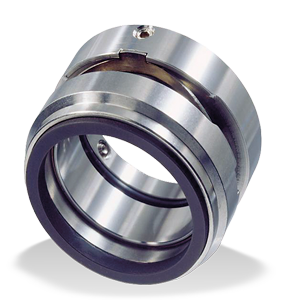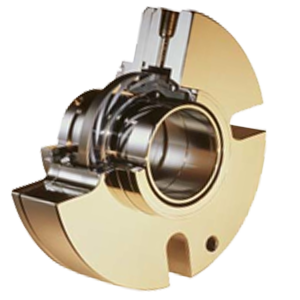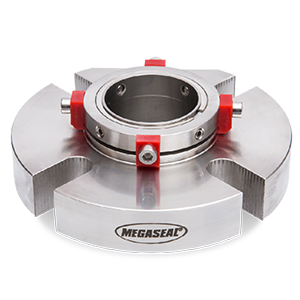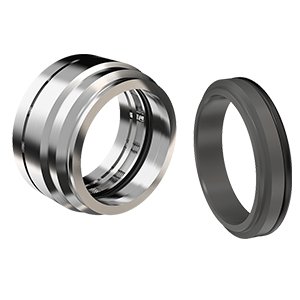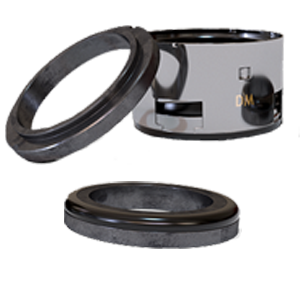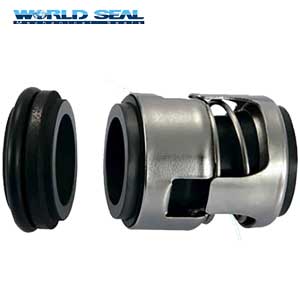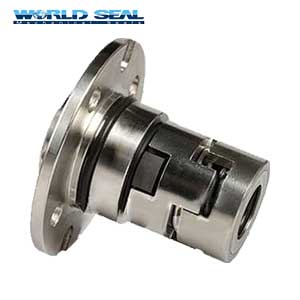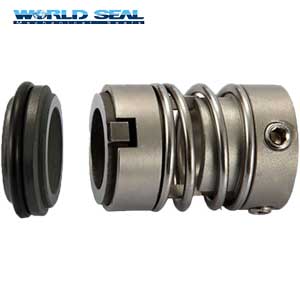Mechanical seal Grunfdos

About Mechanical seal Grundfos
Almost everywhere where pumps with rotating shafts are used, a shaft seal is involved. The shaft mechanical seal grundfos forms a barrier between what is inside the pump and the atmosphere. A pump with a through-shaft is not completely sealed. It is a challenge to the entire pump industry to minimise leakage.
There are countless variants of shaft seals, reflecting the diversity of the pump industry, and the need for specific solutions for individual situations. In its most basic form, a shaft seal combines a rotating part with a stationary part. When properly designed and installed, the rotating part rides on a lubricating film, only 0.00025 mm in thickness. Should the film become too thick, the pumped medium will leak. If the film becomes too thin, the friction loss increases and the contact surfaces overheat, triggering seal failure.
Seal performance greatly influences pump performance. When functioning correctly, the seal remains unnoticed. As soon as it starts to leak, however, significant problems can arise, either with the pump or the surrounding environment. The importance of the shaft seal must never be underestimated during pump design, operation, or maintenance.

Shafting box Mechanical seal Grundfos
A braided stuffing box packing is the simplest type of shaft seal. The packing is placed between the shaft and the pump housing.
See fig. 1.2.
In the stuffing box housing used in fig. 1.2, a soft packing ring is axially compressed until it makes contact with the shaft. After the soft packing has been exposed to wear, the stuffing box must be further compressed to prevent excessive leakage. Vibrations and misalignment will cause this seal type to leak.

Lip Mechanical seal Grundfos
A braided stuffing box packing is the simplest type of shaft seal. The packing is placed between the shaft and the pump housing.
See fig. 1.2.
In the stuffing box housing used in fig. 1.2, a soft packing ring is axially compressed until it makes contact with the shaft. After the soft packing has been exposed to wear, the stuffing box must be further compressed to prevent excessive leakage. Vibrations and misalignment will cause this seal type to leak.

Mechanical shaft seal Grundfos
A mechanical shaft seal consists of two main components:
a rotating part and a stationary part. See fig. 1.4. The rotating part is axially pressed against the stationary part.
In the following, we shall focus on the mechanical shaft seal and its many construction possibilities and applications.

Mechanical shaft seal Grundfos
A mechanical shaft seal grundfos consists of two main components:
a rotating part and a stationary part. See fig. 1.4. The rotating part is axially pressed against the stationary part.
In the following, we shall focus on the mechanical shaft seal and its many construction possibilities and applications.

Secondary Mechanical seal Grundfos
Secondary seals grundfos consist of rubber parts such as O-rings or bellows, used to avoid leakage between the shaft and the rotating seal ring as well as between the stationary seat and the pump housing.
To minimise leakage, the rotating seal ring must be pressed against the seat. Therefore the rotating seal ring must be able to move axially on the shaft. To obtain axial flexibility, the secondary seal must either be a bellows or an O-ring sliding on the shaft.
The secondary seal that seals between the rotating seal ring and the shaft rotates together with the shaft. The secondary seal that seals between seat and pump housing is static. See fig. 1.7.

Spring Mechanical seal Grundfos
The rotating spring presses the rotating seal ring against the seat and the rotating O-ring along the shaft. See fig. 1.8.

Material Mechanical seal Grundfos
| pumped medium | Elastomer | ||||||
| NBR | HNBR | MVQ | EPDM | FKM | FXM | FFKM | |
| water, max, temp [c] | 80 | 100 | 120 | 140 | 90 | 275 | 230 |
| mineral oils, max, tem [c] | 100 | 150 | 120 | – | 200 | 275 | 230 |
| acids | +/- | + | +/- | +/- | +/- | +/- | + |
| alkalis | + | + | +/- | + | – | + | + |
| glycols | + | + | + | + | – | + | + |
| oils, fuel | +/- | +/- | +/- | – | + | +/- | + |
| solvents | – | – | – | – | +/- | – | + |
| abrasive particle | +/- | + | – | + | +/- | +/- | – |
| + | excellent |
| +/- | good under certain conditions |
| – | poor |
| – | disastrous |
Historical mechanical seal Grundfos
At the beginning of the nineteenth century, many endeavours were made to develop a replacement for the conventional, braided packing used for piston pumps and rotating shafts.
A more reliable system for different kinds of liquid-conveying rotating machinery was desired. By the 1930’s, the James Walker Group came up with a mechanical shaft seal for refrigeration compressors. At the same time, the John Crane company invented the first automotive mechanical shaft seal. In the early 1940’s, the company developed and introduced the patented elastomer bellows axial shaft seal, today known as “Type 1”.
After this breakthrough in sealing technology, other types of mechanical shaft seals were developed. With several types of mechanical shaft seals, the John Crane company adopted the tagline, “The right seal for the right application”.
Today, John Crane is still a leading seal manufacturer along with Grundfos, Burgmann, Flowserve, etc.
The first Grundfos mechanical shaft seal
The first Grundfos mechanical shaft seal was launched in 1952. The seal was introduced in the CP, the first vertical multistage pump in the world.
It consisted of an O-ring seal type with tungsten carbide seal faces.
Tungsten carbide against carbon graphite
In the early 1990’s, Grundfos developed a rubber bellows seal with tungsten carbide against carbon graphite seal faces. This soon became the common material choice. The rubber bellows is ideally suited for seals with a carbon seat. This bellows seal was developed for CR pumps and also introduced in LM/LP single-stage pumps, CHI, AP and UMT/UPT single-stage pumps.
SiC against SiC becomes the common material pairing
Since 2004, silicon carbide against silicon carbide (SiC/SiC) became the common material pairing for Grundfos cartridge shaft seals. This pairing has an excellent abrasive resistance and good performance in hot water.
